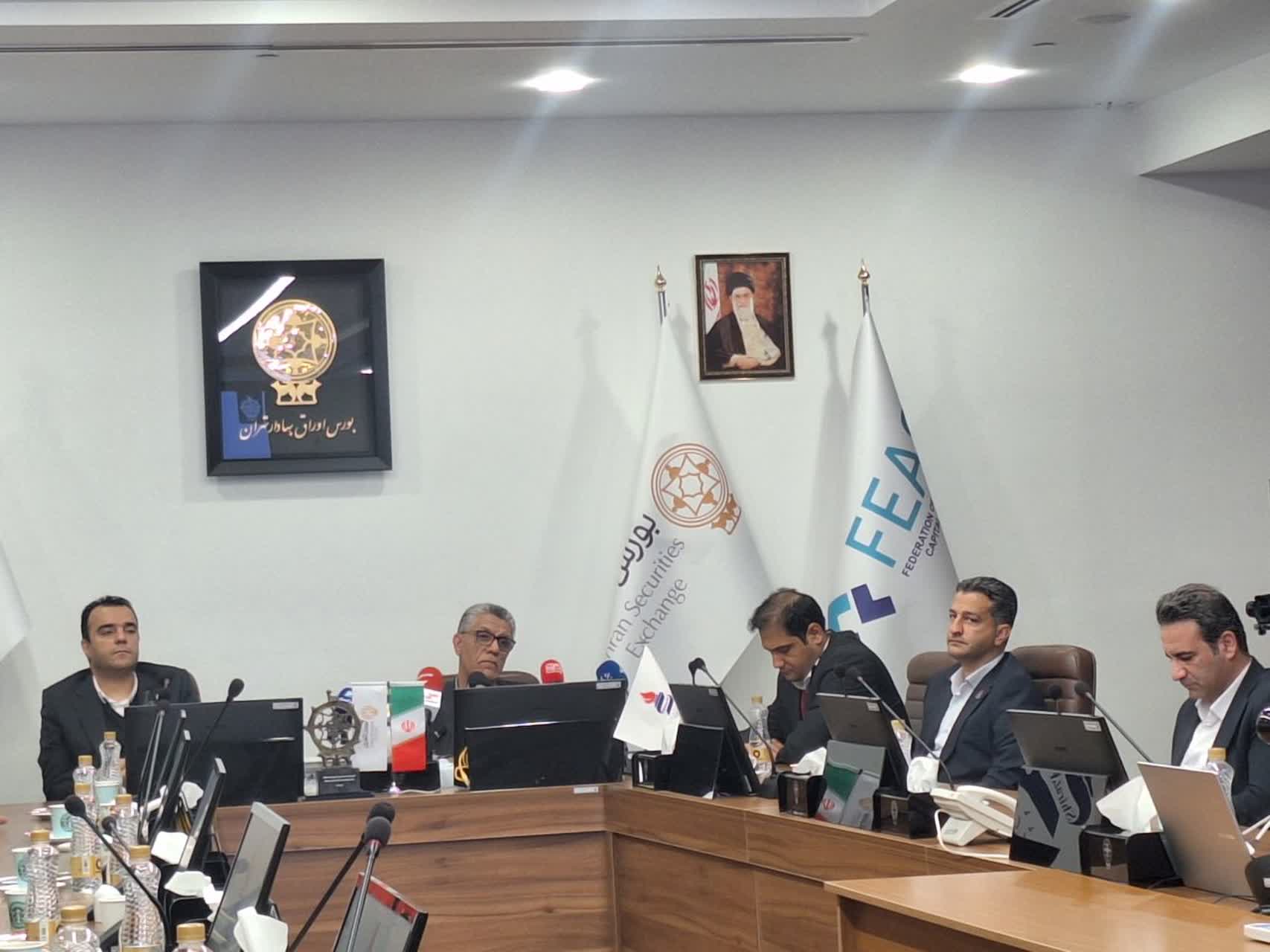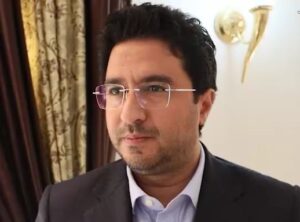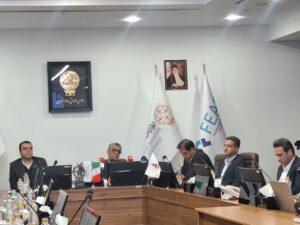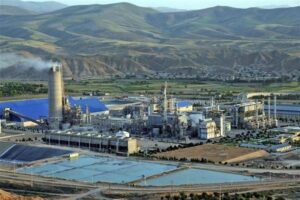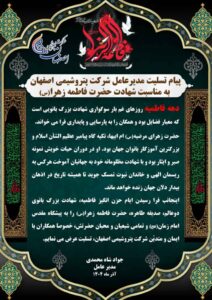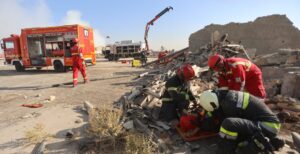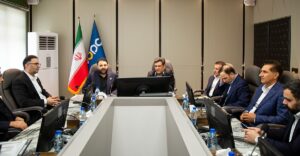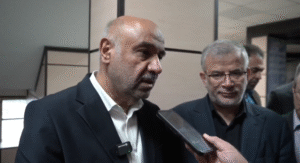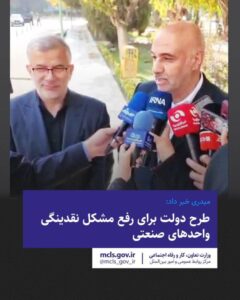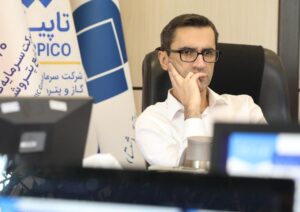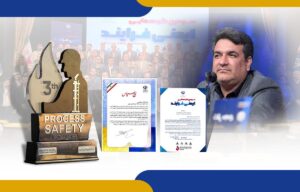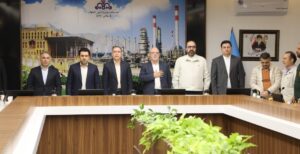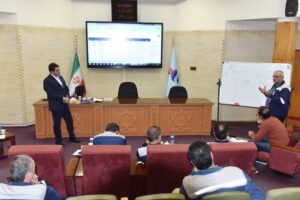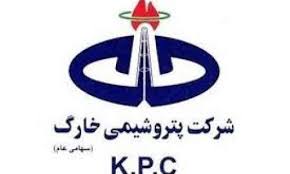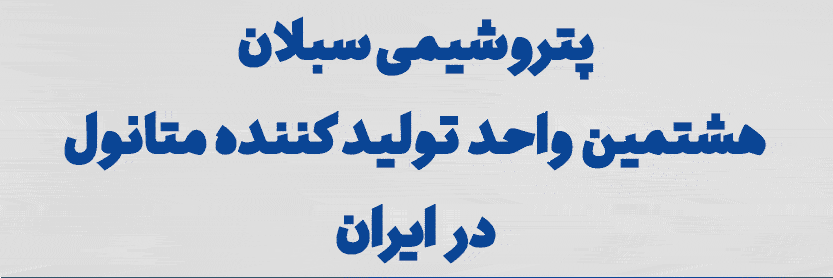At the official ceremony of “Sunday, One Publisher,” held on November 16, to mark the twentieth anniversary of Shiraz Petrochemical’s presence in the capital market, the opening bell of Tehran Stock Exchange trading was rung in the name of this company.
At the beginning of the ceremony, Babak Pourkia, CEO of Shiraz Petrochemical Company (SPC) , described the ringing of the trading bell in the company’s name as a “symbol of the capital market’s trust in the performance and stability of the organization” and said: This event is not merely a symbolic act but a “renewal of commitment to shareholders and an emphasis on the path of transparency, accountability, and adherence to corporate governance principles.”
Pourkia, referring to the long-standing mission of Shiraz Petrochemical, said: Since its establishment in 1963, this company has played a national role in producing strategic products, ensuring the country’s food security, creating sustainable employment, and developing Iran’s industry. According to him, the company’s entry into the Tehran Stock Exchange in 2005 was a turning point in Shiraz Petrochemical’s history, transforming it from a large industrial complex into a transparent and accountable economic enterprise.
Six decades of industrial activity and national contribution
The CEO of the company, in another part of his speech reviewing the history of this organization, said: Shiraz Petrochemical has always been one of the national industry’s prides over more than six decades of activity and has succeeded in earning national and international titles in production, safety, innovation, and specialized laboratories.
He added: During the difficult years of the imposed war and the country’s critical conditions, when many forces from Abadan refinery and southern regions were transferred to central provinces such as Shiraz, Esfahan, and Tehran, capable domestic employees were able to implement the most important development projects of this complex without the presence of foreign companies.
Pourkia explained that the complex’s second development plan, whose foundations were laid before the revolution, was put into operation in 1985 relying on domestic capabilities and increased the company’s production capacity to about ten times that of the initial plan in 1970.
Major Achievements in Development Projects
According to the CEO, Shiraz Petrochemical has been one of the pioneers in executing complex projects over the past decades. Referring to the commissioning of the Ammonia Unit in Region 3, he said: In the years 2016 and 2017, this massive unit was commissioned in less than six months through domestic effort and capability; a world record that was unparalleled among ammonia projects worldwide and brought international honor to the company.
Pourkia added: This company was the first producer of some nitrogen products in the country and is now considered one of the largest producers of nitrogen products and chemical fertilizers in the Middle East.
Product diversity and significant share in national production
Shiraz Petrochemical produces 7 to 8 main products including ammonia, nitric acid, ammonium nitrate, liquid fertilizer UAN, methanol, urea, and industrial gases, playing an important role in meeting the country’s needs. According to the company’s CEO, it supplies about 22% of the country’s fertilizer production and remains the second-largest producer of chemical fertilizers after Pardis Petrochemical.
Pourkia added: Despite internal and international challenges, we have made every effort to maintain stable and continuous production and to have an active and influential presence in both domestic and international markets.
Sustainable Exports and New Target Markets
Shiraz Petrochemical is one of the major exporters of petrochemical products, exporting about one million tons annually. Pourkia stated that the geographical distance of the complex compared to the complexes in the south of the country is one of the export challenges and explained: To improve the export process, in recent years we have established several hectares of warehouses and dedicated infrastructure in Bandar Abbas and Shahid Rajaee Port, and we load export products directly from there.
He also announced serious plans to develop the African market and said: In past years, direct sales to South Africa were made, but this process stopped due to sanctions restrictions. Now, through intermediary companies and trade networks, we are returning to this market and are developing markets in African countries as well as Brazil. We hope, with the support of Parsian Oil & Gas Development Group(POGDC), to officially enter these markets within the next one or two months.
Unlike complexes such as Asaluyeh and Mahshahr, Shiraz Petrochemical faces a distance of 450 to 700 kilometers from the port. To solve this issue, over the past few years, we have established several hectares of covered warehouses in Bandar Abbas and have also rented warehouses in the Shahid Rajaee Port complex. We transfer products to these warehouses so that customers can notify the docking time of ships within a one to two-month period as needed.
Desirable performance in the first half of the year
The CEO of Shiraz Petrochemical, referring to the company’s six-month performance, stated: In the first half of the year, we had significant growth in production, sales, and revenue generation. Despite the explosion incident in Bandar Abbas and the resulting restrictions that affected not only us but several other complexes, as well as the impacts of the 12-day emergency conditions in the region, we managed to produce between 100,000 and 130,000 tons during this short period.
He attributed this achievement to the “support of the Ministry of Petroleum, the National Iranian Petrochemical Company, and the round-the-clock efforts of workers and experts.”
Development projects and capital increase plan
Continuing the ceremony, the CEO, said about capital increase and the company’s development approach: Capital increase is on the agenda, and preliminary actions have been taken but it has not been finalized yet. We are trying to complete the capital increase by the end of the year after shareholder approval. On the other hand, we have defined several new development projects that are awaiting final permits from the Ministry of Petroleum and the National Iranian Petrochemical Company.
In response to whether there is a plan to issue bonds and finance through modern financial instruments, he said: We carry out some projects through the National Development Fund, but project financing through modern capital market instruments, bond issuance, and other financing methods is also under consideration.
Bagging Project; Annual Savings of Several Hundred Billion Tomans
Pourkia announced one of the important projects in recent years: the construction of a bagging unit; a project with an investment of about 6 million euros and 50 to 55 percent progress, currently underway in the Shiraz Economic Zone.
This unit will produce 15 to 20 million 50-kilogram bags annually, resulting in a significant reduction in the cost of bag supply, which imposed a financial burden of thousands of billions of rials on the company. Operation of this project is expected within the next 8 to 9 months.
Entering the Seventh Decade of Activity with a Vision for Sustainable Development
The CEO of Shiraz Petrochemical concluded his remarks by stating: On the threshold of the seventh decade of activity, we are more prepared than ever to pursue the path of sustainable development, equipment modernization, efficiency enhancement, productivity improvement, and value creation for shareholders with firm determination.

